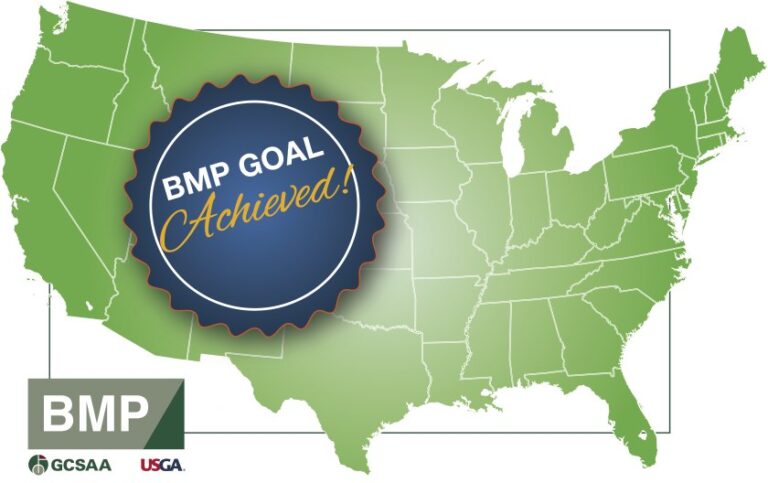State BMPs demonstrate golf course superintendents’ environmental stewardship
LAWRENCE, Kansas (Jan. 19, 2021) –Three years after launching an initiative to create golf course best management practices in all 50 states by the end of 2020, the Golf Course Superintendents Association of America (GCSAA) has announced the successful completion of the endeavor.
As of Dec. 31, 2020, each of the 50 states now has established state specific BMPs featuring agronomic practices that support environmental stewardship.
“Our goal to develop BMP manuals across the nation in such a short time frame was ambitious, but we knew these documents were a must as we work proactively with legislators, regulators and communities to demonstrate how superintendents are dedicated environmental stewards,” GCSAA CEO Rhett Evans said.
“This is truly a watershed moment for our members, the game of golf and the people and wildlife who benefit from the agronomic and environmental practices superintendents engage in every day.”
While steering committees in each state composed primarily of GCSAA members led the efforts, they worked closely with others in the golf industry, university faculty and officials from various state agencies around the country in creating the BMPs.
To aid in their efforts, GCSAA created a Planning Guide and Template tool to provide the blueprint for each of the state documents, which cover key areas such as water management, integrated pest management and pollinator protection. Funding for the Planning Guide and Template was also supported by the USGA.
In addition, GCSAA also provided financial assistance for the state projects via BMP grants, which were funded in part by the PGA Tour through GCSAA’s philanthropic organization the Environmental Institute for Golf. Others who provided support to the creation of the BMP manuals include the PGA of America, Jack Harrell Jr. and Herbert V. Kohler Jr.
“We are extremely proud of the GCSAA members who gave of their time and talents to spearhead the effort, but it’s a testament to collaborative nature of the golf industry and the widespread understanding that the benefits of our environmental practices go well beyond the golf course that so many individuals and organizations were involved,” Evans said. “We thank the many volunteers and supporters who helped make this vision a reality.”
Prior to the launch of the initiative in 2017, seven states – Florida, Michigan, New York, Oregon, Pennsylvania, Virginia and Washington – already had comprehensive golf course BMPs. However, those states did update their documents using the resources provided by GCSAA.
Now that the state BMPs have been established, the initiative moves on the next phase with creation of facility BMP manuals. Using the GCSAA Planning Guide, individual golf facilities can use their state guides to create a BMP manual for their course.
Facility BMP manuals not only direct and document agronomic and environmental practices, but they provide an easy, detailed reference for golfers, lawmakers and community members to better understand the operations behind the maintenance of one of their local greenspaces.
Sen. Angus King (I-ME), who contributed the forward to the Maine BMP manual, understands the value of the manuals for the citizens of his state.
“Maine’s golf courses are gaining wide recognition as a valued recreational resource,” King said. “At the same time, our communities want to know that golf courses are correctly managing their water resources, including protecting valuable wetlands and employing good IPM and nutrient management methods. This manual provides extensive guidance.”
To learn more about golf course best management practices and see all of the state BMP guides, visit https://www.gcsaa.org/environment/best-management-practices.


